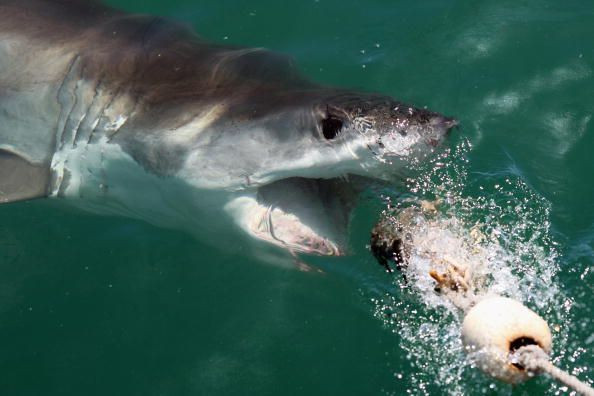Researchers Find A Great White Shark Bitten By An Even Bigger Predator

A 13-foot-long great white shark that was captured by researchers had bite marks from an even bigger predator on its head and jaw.
Vimy, a great white, was caught off the coast of Nova Scotia earlier this month by OCEARCH, a data-centric organization tracking sharks. The enormous shark measured around 13-foot and had been savaged by a predator even bigger than its size.
The most noticeable scars on Vimy’s body were two gashes along with its head and jaw. One of them seemed to have healed while the other still looked fresh.
Researchers from the U.S. based OCEARCH who captured the shark, suggest that the bite marks could have come from a shark that measured at least 14 to 15-feet.
"It was clear that something had just grabbed his entire head. It was a very large animal that grabbed it, something significantly bigger … anything that can grab an animal like that by the head is pretty impressive," Chris Fischer, founding chairman of OCEARCH told McClatchy News.
See posts, photos and more on Facebook.
Vimy, which was one of the biggest sharks they captured, was being tracked in the North Atlantic Ocean. He is the newest shark in their tracker, after being tagged on Monday.
According to Fischer, Vimy could have been bitten by another male shark over a mate, or by a bigger female who didn’t want to mate.
"We do know that shark mating is very violent. Sharks biting each other in the head is not a new thing. This is an everyday part of their life,” he added.
Based on the size of the bite marks, Fischer suggested that Vimy’s attacker would at least be two or more feet longer.
Earlier in their expedition, the researchers managed to come across a female white shark which was 17-foot-long, however, they were not able to tag it.
The biggest shark that OCEARCH tagged was a female shark they name Mary Lee, measuring almost 16-foot.
© Copyright IBTimes 2025. All rights reserved.





















